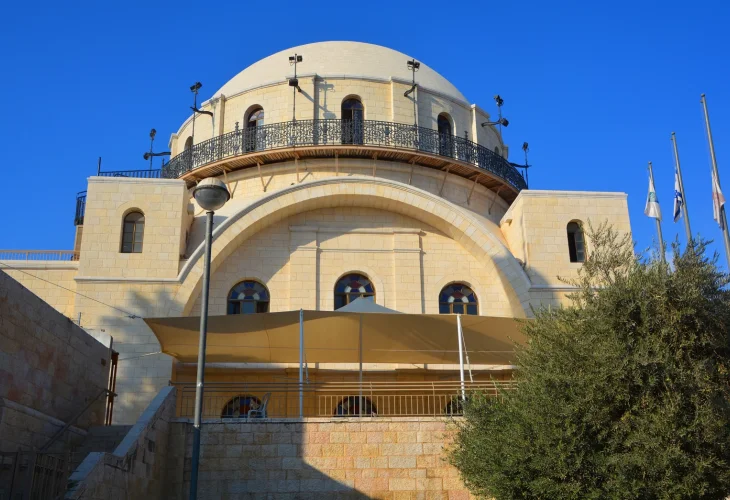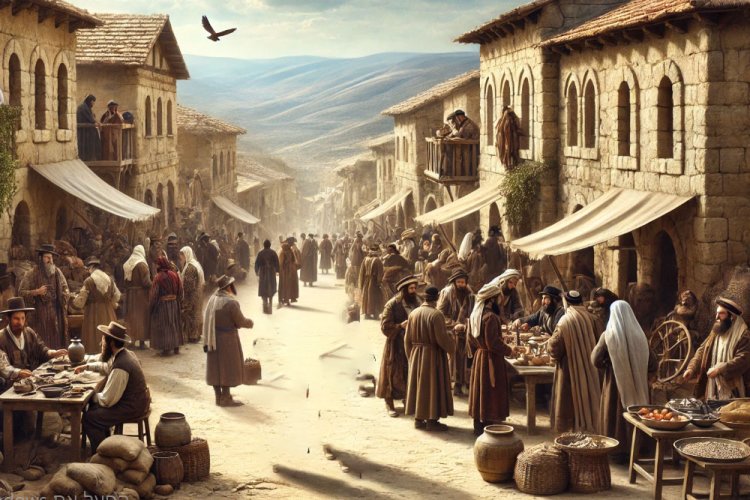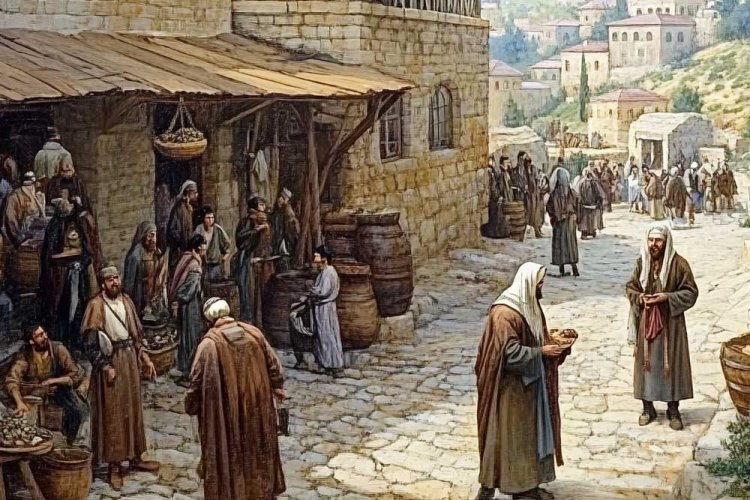The Historic Tale of the Hurva Synagogue
The Hurva Synagogue stands as a central landmark in Jerusalem's Old City. Why is it named so, and who was Rabbi Judah the Pious?
 Hurva Synagogue (Photo: shutterstock)
Hurva Synagogue (Photo: shutterstock)The Hurva Synagogue is a prominent site in Jerusalem's Old City. Recently restored, it serves as a spiritual center for communities residing in the Jewish Quarter. Before it was destroyed during the fall of the quarter in 1948, it was the heart of the Ashkenazi congregation led by Rabbi Yosef Chaim Sonnenfeld, and before him, Rabbi Shmuel Salant and other great minds of Jerusalem.
But even then, while it was still standing, it was called "Hurva of Rabbi Judah the Pious." Why was this, and who was Rabbi Judah the Pious?
One of the notable scholars of the Tosafists was Rabbi Judah the Pious, the author of "Sefer Hasidim." However, our story refers to a later figure known as Rabbi Judah Hasid.

Rabbi Judah Hasid the second was born in 1660, a few years after the traumatic events of 1648-1649 in Poland, where the Jewish community was devastated. Families were shattered, and spiritual life was in disarray. Community leaders strove to rebuild both materially and spiritually. Among these leaders was Rabbi Judah Hasid, a young itinerant preacher visiting Jewish towns with inspiring speeches. Due to his ascetic behavior, he was called "Hasid" (Pious), though his original name was Rabbi Judah Segal.
In 1697, at the age of 37, he began advocating for the return to the Land of Israel: to hasten the arrival of the Messiah, Jews should move to Israel. Over three years, he gathered around 1,500 followers, including renowned Torah scholars. In Vienna, Rabbi Shmuel Oppenheimer offered them two ships and funds for their journey. After a long and perilous voyage, 1,000 Jews from Europe reached Jerusalem on Thursday, the first of Cheshvan, 1700.
Preparations included building forty houses, a synagogue, a study hall, a mikvah, and cisterns. Their arrival doubled the Jewish population of Jerusalem, causing quite a stir.
Tragically, only a few days after reaching Jerusalem, on the 6th of Cheshvan, Rabbi Judah Hasid passed away at age 41. His death destabilized the group, as he had been the key figure responsible for securing funds and making decisions. Properties were purchased based on promises he was to fulfill. Additionally, bitter disputes arose within the group. Some of the newcomers were followers of the false messiah, Shabtai Zvi, which alienated others within the group. Some even accused Rabbi Judah Hasid of being a Sabbatean, leading to significant conflict. The established Jewish community in Jerusalem would not cooperate with the Sabbateans, causing some to return to Poland, and the community infrastructure collapsed completely.
The Arab workers who built the synagogue demanded their wages but found no one to pay them. Local Jews of Sephardic origin claimed that the debts were "Ashkenazi." In anger, the Arabs destroyed the synagogue, and for nearly 150 years, any Ashkenazi Jew entering Jerusalem was subject to being held accountable for the debts, leading them to disguise themselves as Sephardic Jews. The synagogue stood in ruins, and thus it became known as "Hurva of Rabbi Judah the Pious."

It wasn't until 1836, when the followers of the Vilna Gaon arrived, that Rabbi Avraham Shlomo Zalman Zoref managed to pay off the debts of Rabbi Judah Hasid's group. He received special permission from the Sultan to rebuild the Hurva Synagogue, turning it into a grand structure. It became the heart of Ashkenazi religious life, hosting public representatives from Israel and abroad, and serving as a venue for special ceremonies, including receiving the High Commissioner Herbert Samuel, a Jew, and holding special prayer days during the Holocaust.
In 2011, Rabbi Judah Hasid's burial cave was discovered on the Mount of Olives, along with some members of his group.

